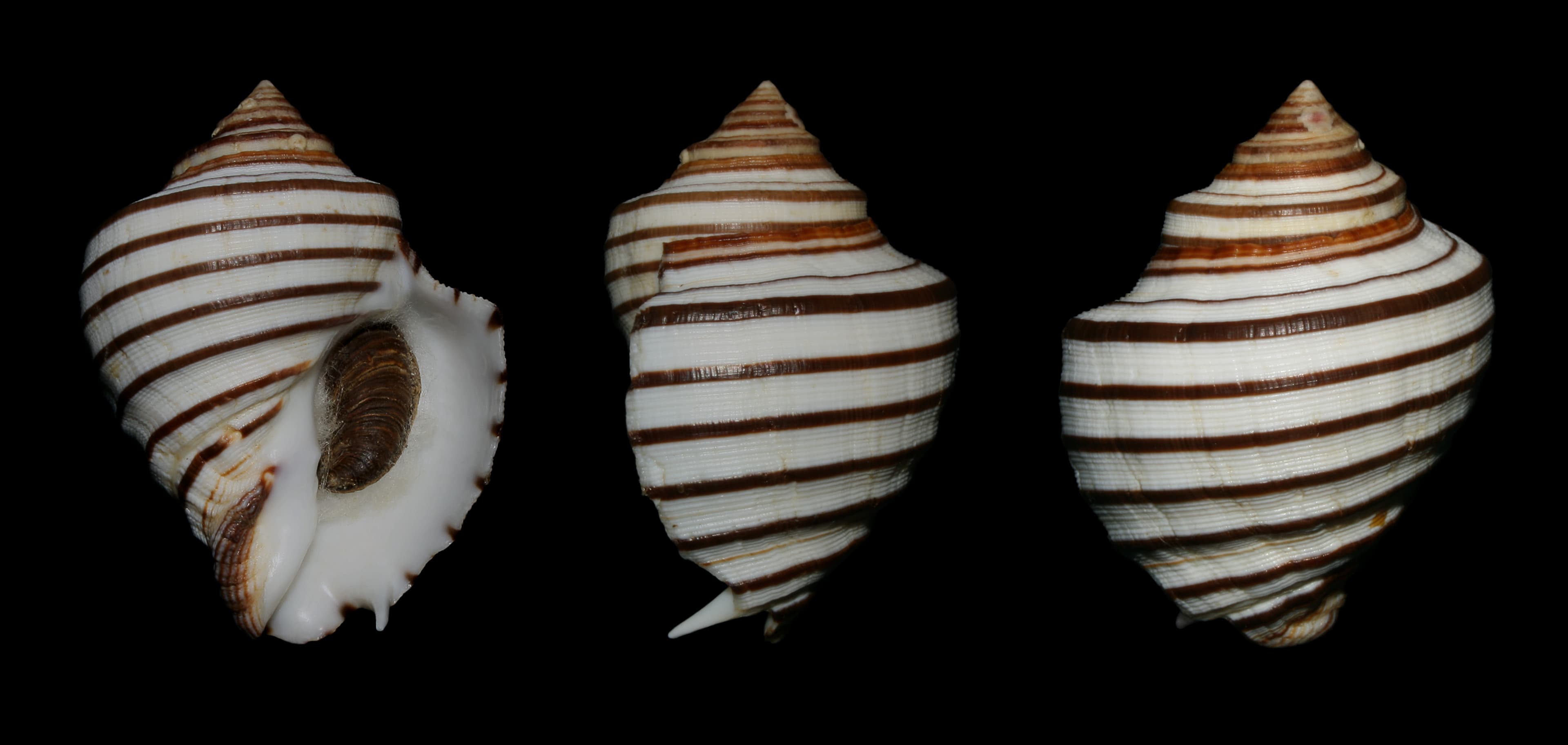Common name: Thorn Latirus
General Information
The Thorn Latirus (Opeatostoma pseudodon) is a fascinating marine gastropod mollusk belonging to the family Fasciolariidae. Known for its distinctive thorn-like projections on its shell, this species is a unique addition to any marine aquarium. Its shell is elongated and adorned with intricate ridges and spines, making it a visually striking specimen for hobbyists who appreciate the beauty of marine invertebrates.
Native to the tropical and subtropical waters of the eastern Pacific, the Thorn Latirus is often found in sandy or muddy substrates where it burrows and forages for food. Its natural habitat includes intertidal zones and shallow waters, making it relatively adaptable to aquarium life. While not as commonly seen in the trade as some other marine snails, its unique appearance and functional role as a scavenger make it a desirable choice for aquarists.
Details
- Estimated price
- Affordable
- Recommended minimum volume
- 50 liter (13 gallons)
- Salinity
- S.G. 1.023 to 1.025
- Temperature
- 24 to 27 °C (75 to 81 °F)
- Acidity
- pH 8 to 8.5
- Average size
- 5 cm (2″)
- Care level
- Moderate to easy Hardy but requires stable water conditions
- Diet
- Carnivore Feeds on detritus, carrion, and small invertebrates
- Reefsafe
- Yes May prey on small invertebrates
- Aggression
- Peaceful Peaceful but may prey on small, slow-moving invertebrates
- Captive bred
- No
Taxonomy
- KingdomAnimalsAnimalia
- PhylumMollusksMollusca
- ClassGastropodsGastropoda
- OrderNeogastropodsNeogastropoda
- FamilyTulip snailsFasciolariidae
- GenusHooded SnailsOpeatostoma S.S.Berry, 1958
- SpeciesThorn LatirusOpeatostoma pseudodon (Burrow, 1815)
- SynonymsBuccinum pseudodon Burrow, 1815Leucozonia cingulata (Lamarck, 1816)Monoceros angulatum Rogers, 1913Monoceros cingulatum Lamarck, 1816
- Source: GBIF | Global Biodiversity Information Facility
Care
The Thorn Latirus is relatively hardy and can adapt well to a range of aquarium conditions, making it suitable for hobbyists with moderate experience. It thrives in tanks with sandy substrates that allow it to burrow and exhibit natural behaviors. Providing a stable environment with live rock and hiding spots will help this species feel secure.
This snail is an excellent scavenger, helping to clean up detritus and uneaten food in the tank. However, it is important to ensure that the aquarium has sufficient food sources, as it may not thrive in overly sterile environments. Regular monitoring of water parameters and maintaining stable conditions are key to its health.
Diet and Feeding
The Thorn Latirus is a carnivorous scavenger, feeding primarily on detritus, carrion, and small invertebrates. In captivity, it can be fed a diet of meaty foods such as chopped shrimp, fish, or commercially available frozen foods. It may also consume leftover food from other tank inhabitants, contributing to the overall cleanliness of the aquarium.
Feeding should be done sparingly, as overfeeding can lead to water quality issues. Observing the snail's activity and ensuring it has access to food will help maintain its health and vitality.
Behavior and Compatibility
The Thorn Latirus is generally peaceful and can coexist with a variety of tank mates. However, caution should be exercised when housing it with small, slow-moving invertebrates, as it may prey on them. It is best kept in tanks with other peaceful species and should not be housed with aggressive fish or invertebrates that may harm it.
This species is nocturnal and most active during the night, when it emerges to forage for food. Its burrowing behavior is both fascinating to observe and beneficial for maintaining the substrate's health.
Health and Common Issues
The Thorn Latirus is a hardy species but can be susceptible to poor water quality and sudden changes in parameters. Maintaining stable salinity, temperature, and pH levels is crucial for its well-being. Regular water changes and monitoring for signs of stress or illness will help ensure its longevity.
When selecting a Thorn Latirus, look for individuals with intact shells and active behavior. Avoid specimens with damaged shells or those that appear lethargic, as these may indicate underlying health issues.
Habitat
In the wild, the Thorn Latirus is found in the eastern Pacific, ranging from Baja California to Peru. It inhabits sandy and muddy substrates in intertidal zones and shallow waters, often burrowing to avoid predators and search for food. Replicating these conditions in captivity with a sandy substrate and moderate water flow will help this species thrive.







